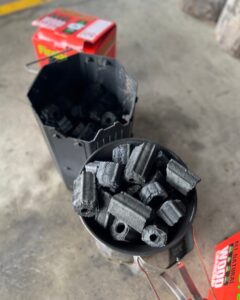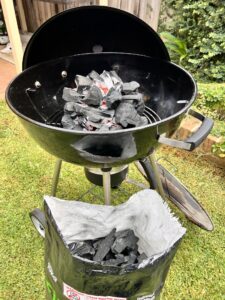All Posts
Your Firebrand Fuel Cheat Sheet: All You Need To Know
When it comes to BBQ fuel, there’s no doubt Firebrand’s products are a cut above the rest. Since launching almost 2 decades ago, we’ve become a highly regarded brand most preferred by establishments, chefs, and expert grillers all over Australia. Attend a raging backyard party, and there’s a high chance Firebrand charcoal is lighting up the barbie!
There’s certainly an allure to grilling and cooking outdoors, and everyone would have their own preferences for their fuel of choice. If you haven’t found yours yet, knowing the different fuel types is definitely the place to start. So if you want to master the grill , we’ve compiled this helpful guide on Firebrand’s three main lines of fuel: briquettes, lumps, and pellets.
Briquette Charcoal

Briquette is a type of charcoal that has been given shape or form. It is made with a by-product as its main raw material, usually sawdust, brown coal, coconut shell, or bamboo. Most are also manufactured with a binding agent that is food grade and safe to use. However, some still use potentially hazardous binding agents that emit a foul odour upon lighting and should be discarded.
Firebrand Briquettes are made from 100% hardwood sawdust with zero binding agents and chemical additives. Its unique hex design allows for a long lasting, fierce burn and extreme heat, so it’s great for grilling, smoking, or rotisserie cooking. No smoke, sparks, or odour; plus, it’s low on ash for easy cleanup.
Serious grillers tend to skip briquettes because most are packed with binders to hold their shape. Not Firebrand briquettes, though. Our premium and professional variants are guaranteed to outperform any other briquette product in the market – you won’t find anything else that burns hotter and longer!
Lump Charcoal

Lump charcoal is made from pure natural hardwood. They light quickly and can reach higher cooking temperatures compared to briquettes. However, the kind of hardwood used to manufacture lump charcoal can also affect heat output and burn time. Low quality lumps contain more sawdust, making it hard to control.
Firebrand Lump Charcoal is produced using super dense, single origin citrus hardwood. This means you’ll be able to cook for longer over a hotter heat source, with a consistent burn every time.
Our Premium variant contains small to medium sized pieces great for low and slow cooking in kettles, bullet and drum smokers, or other applications where you need your fuel to sit nice and compact. They are recommended for grilling, smoking, and shisha.
Our Professional variant comes in larger lumps and is ideal for all open cooking applications – grilling, smoking, and rotisserie. It’s the perfect partner for your meat as it imparts a light smoky flavour without overpowering your rubs and spices. You get to experience authentic charcoal flavour without the lumps affecting the taste of your protein.
BBQ Pellets

Wood pellets are produced using various trees, each pairing well with different kinds of meat. These burn slow and hot with an even flame and are best for smoking – the process of slow-roasting meat and letting it bathe in the terpenes and flavonoids released from burning wood. This enhances the flavour of the meat, making it even more appetising.
If you have a pellet grill and are looking for an easy, controlled burn, our Firebrand BBQ Pellets will be right up your alley. It’s made from pure Australian hardwood with zero binders, fillers, and oils, so smoking food is easier and tastes even better. It provides a robust but neutral smoke profile, similar to smoking with natural Aussie Ironbark, which makes it ideal for proteins and vegetables.
When to use briquettes, lump charcoal, and BBQ pellets?
Again, it all comes down to preference. Lump charcoal is versatile as it lights up quickly for hot and fast cook ups, but it can also be used for low and slow cooking. Briquettes, on the other hand, can be cheaper and burn for longer.
Many expert grillers love mixing all three – BBQ pellets to smoke meats and then creating a layer of hardwood lump at the base of a charcoal starter with briquettes on top to help quicken the lighting process. Don’t be afraid to experiment with different fuel types to discover your personal grilling style and explore various flavours!
Got your preferred fuel? Now it’s time to learn how much fuel you really need for your cookouts. Click here for our guide.
